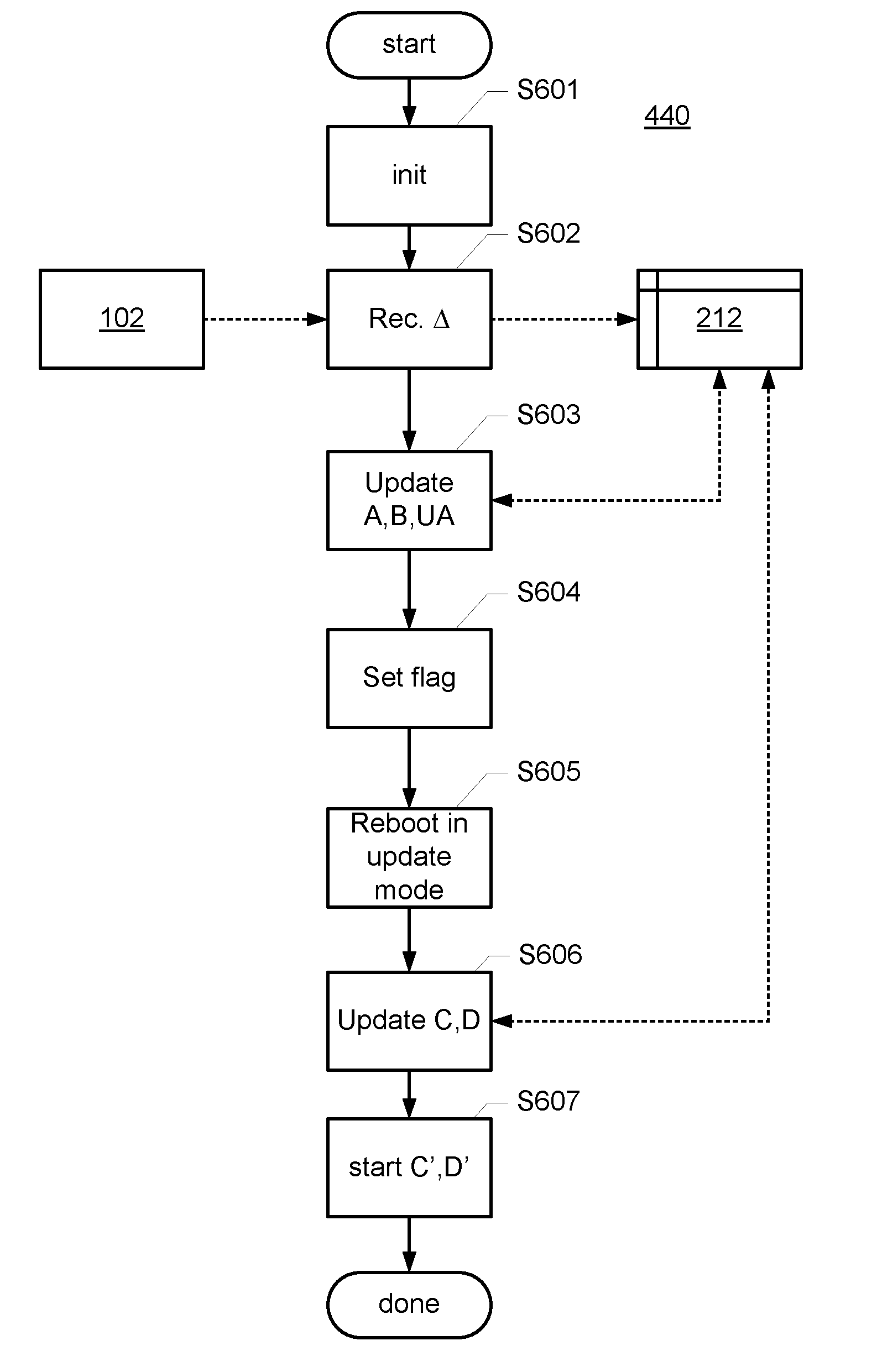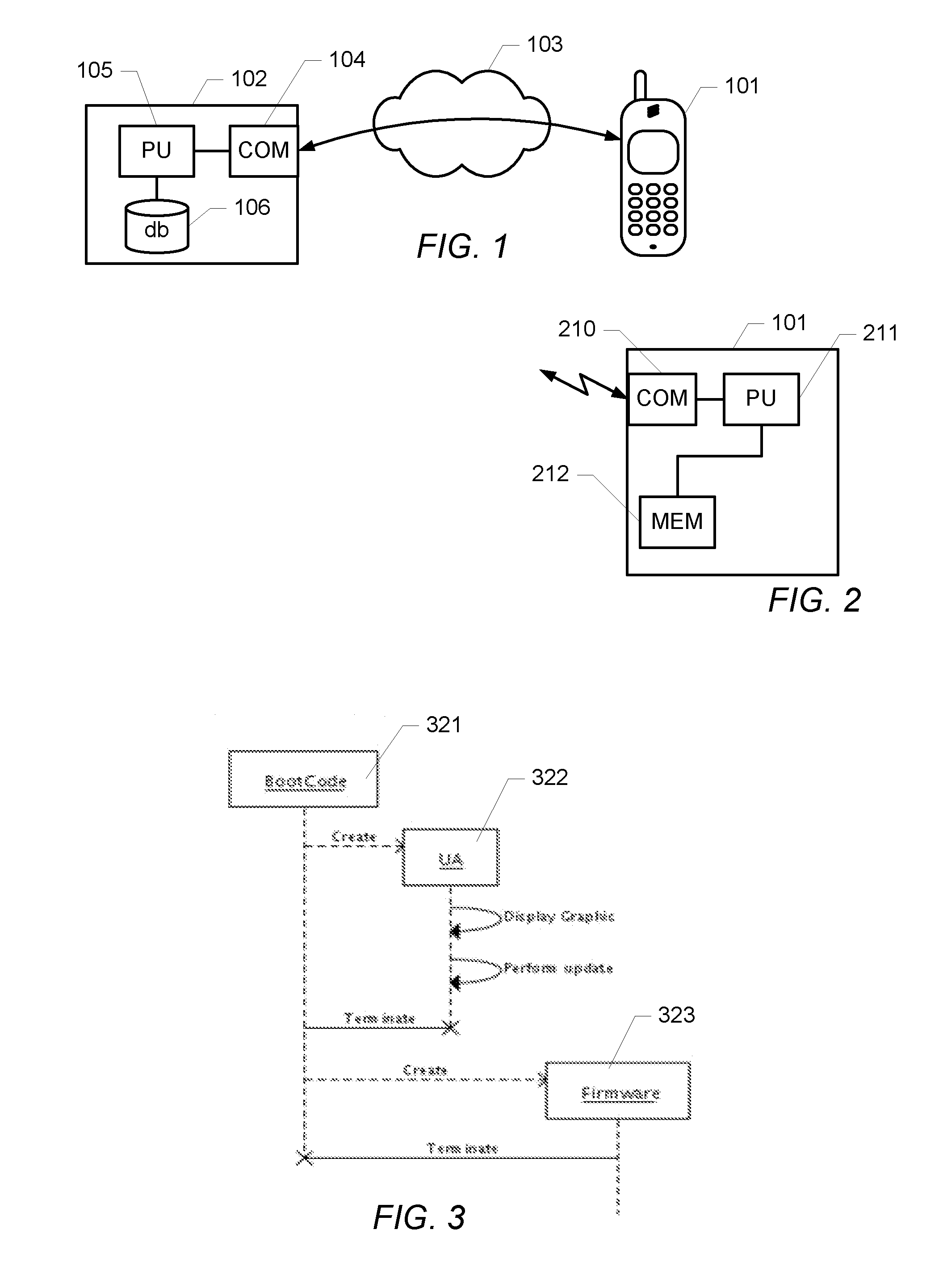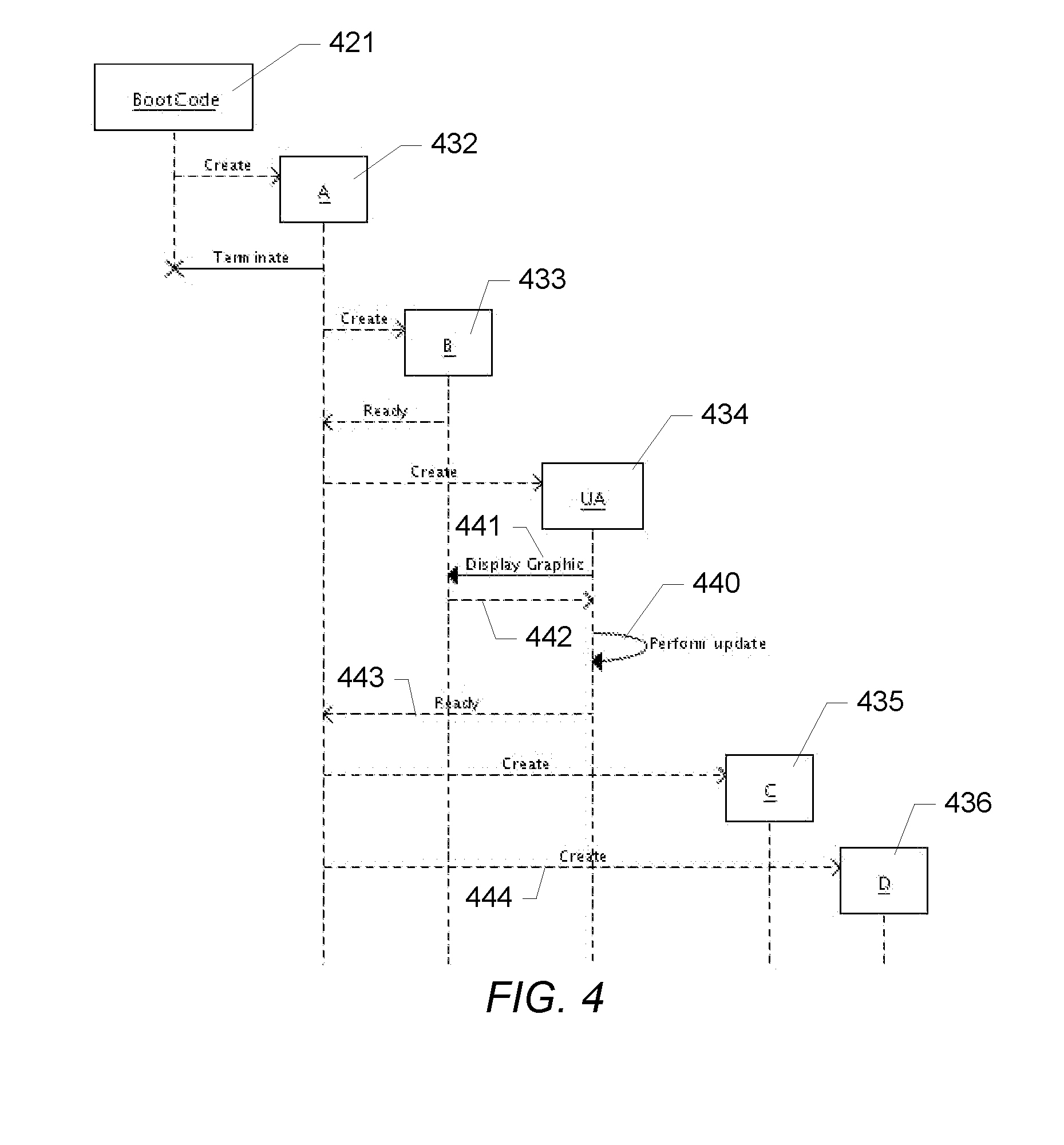Updating Firmware of an Electronic Device
a technology of electronic devices and firmware, applied in the field of software updating, can solve the problems of inability to fully crash, unstable firmware execution, application failure, etc., and achieve the effects of reducing the required storage capacity, minimizing code duplication, and being more fail-sa
- Summary
- Abstract
- Description
- Claims
- Application Information
AI Technical Summary
Benefits of technology
Problems solved by technology
Method used
Image
Examples
Embodiment Construction
[0050]FIG. 1 schematically shows a block diagram of an embodiment of a system for updating software in an electronic device such as a mobile terminal. The system comprises an electronic device 101, e.g. a mobile telephone or the like, a software updating system 102, and a communications interface 103.
[0051]The software updating system 102 may comprise a server computer having access to the communications network. In some embodiments, the functionality of the server computer may be distributed among a plurality of computers, e.g. computers connected via a computer network, e.g. a local area network, a wide area network, an Internet, or the like. The software updating system 102 comprises an interface circuit 104 allowing the software updating system to communicate data via the communications interface 103. For example, the interface circuit may comprise a serial port, a parallel port, a short range wireless communications interface, e.g. an infrared port, a Bluetooth transceiver, or ...
PUM
 Login to View More
Login to View More Abstract
Description
Claims
Application Information
 Login to View More
Login to View More - R&D
- Intellectual Property
- Life Sciences
- Materials
- Tech Scout
- Unparalleled Data Quality
- Higher Quality Content
- 60% Fewer Hallucinations
Browse by: Latest US Patents, China's latest patents, Technical Efficacy Thesaurus, Application Domain, Technology Topic, Popular Technical Reports.
© 2025 PatSnap. All rights reserved.Legal|Privacy policy|Modern Slavery Act Transparency Statement|Sitemap|About US| Contact US: help@patsnap.com



